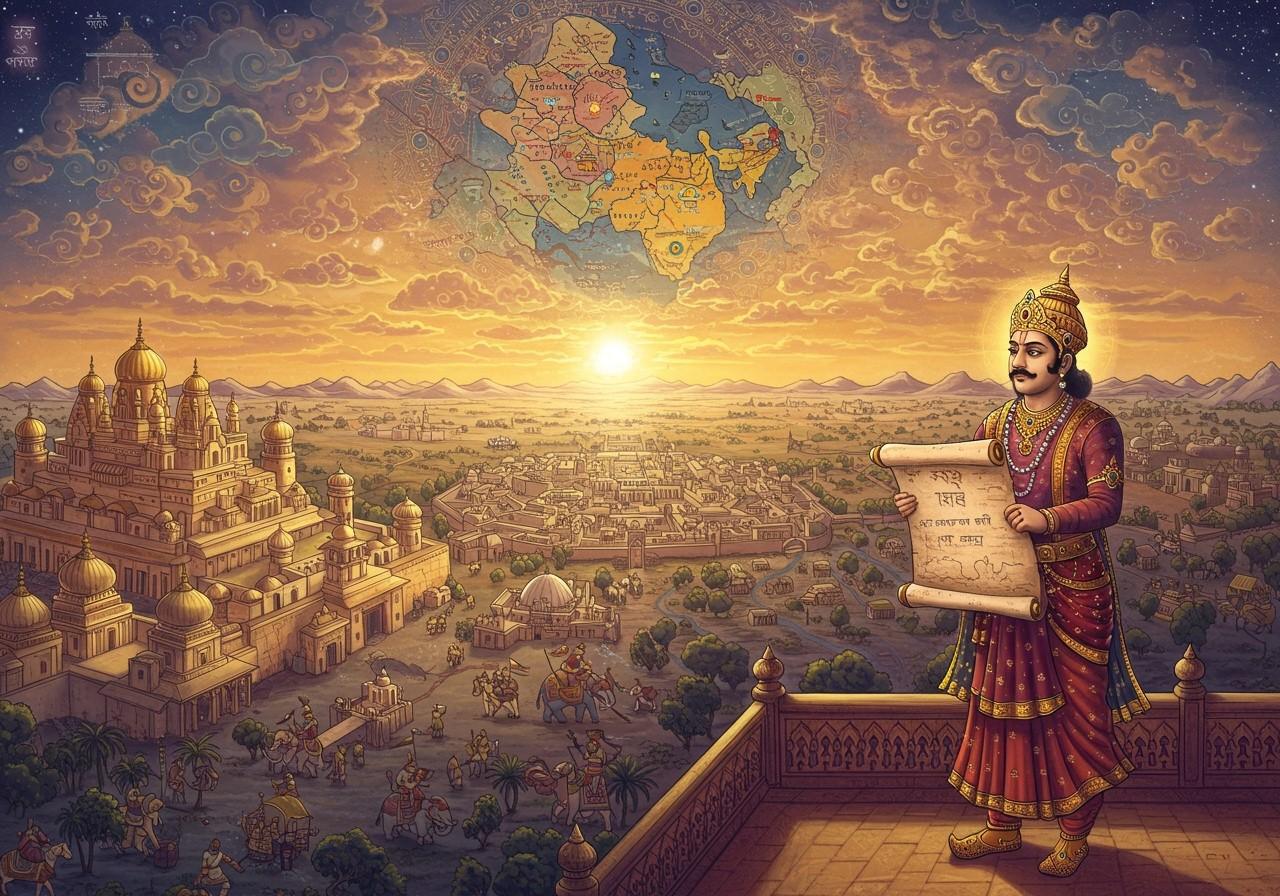
The Vardhana Dynasty, also known as the Pushyabhuti dynasty, significantly shaped the Indian subcontinent’s history during the 6th and 7th centuries. This article delves into the dynasty’s rise, reign, and decline, utilizing maps and historical sources to provide a comprehensive understanding of this powerful empire that bridged ancient and medieval India. It reached its peak under Harsha Vardhana, who reigned from 606 to 647 CE.
Historical Overview (6th-7th Centuries CE)
Emerging after the Gupta Empire’s decline, the Vardhana dynasty, centered in present-day Haryana with its capital at Thanesar, rose to prominence. While its roots trace back to rulers like Prabhakar Vardhana, it was under Harsha Vardhana (606-647 CE) that the empire reached its zenith, expanding across much of north and north-western India. Harsha’s adept administrative and military strategies, combined with the influence of both Buddhism and Hinduism in governance, marked a period of significant political, cultural, and economic progress. Strategic alliances with neighboring kingdoms further solidified the dynasty’s power, leading to a flourishing society and improved economic conditions.
Mapping the Vardhana Empire
Maps of the Vardhana Empire visually depict its vast extent, highlighting key regions like Kannauj and Thanesar, crucial for control and trade. Comparing these maps with those of contemporary empires underscores the dynasty’s significant territorial expansion. Despite facing topographical challenges, the Vardhana rulers skillfully developed infrastructure, including roads and trade routes, to maintain cohesion and facilitate commerce.
Exploring Historical Sources
Primary sources offer invaluable insights into the Vardhana Dynasty. Bana Bhatta’s Harshacharita provides a detailed account of Harsha’s life and reign, while the writings of the Chinese Buddhist monk Xuanzang offer a unique perspective on the empire’s culture and society. Archaeological discoveries, inscriptions, and coins further illuminate economic practices and daily life. Literary works and oral traditions, while subject to limitations, enrich our understanding of this era and contribute to preserving the dynasty’s legacy.
Cultural and Artistic Contributions
The Vardhana Dynasty significantly enriched Indian culture and heritage. Art and architecture flourished under their patronage, resulting in notable monuments and religious structures. The rulers’ support for literature and scholarly pursuits fostered the spread of Buddhism and Hinduism. Cultural exchanges with neighboring regions further diversified societal norms and traditions, leaving a lasting impact on modern Indian culture.
Legacy and Decline
Harsha’s death in 647 CE created a political vacuum in North India. Internal conflicts, succession disputes, external invasions, and economic pressures gradually weakened the empire. Although the Vardhana Dynasty eventually declined, its influence persisted, shaping the political landscape of India and leaving an enduring legacy in art, architecture, and literature.
Poojn.in: Connecting You to India’s Heritage
As you delve into the fascinating history of the Vardhana Dynasty, enhance your understanding and connection to this era with authentic products from Poojn.in. We offer a wide range of items that bridge the gap between historical research and spiritual practices:
- Sacred Texts and Historical References: Immerse yourself in the era with authentic religious texts and reference materials providing historical insights into ancient Indian dynasties, including the Vardhana Dynasty. Explore our collection at Poojn.in.
- Traditional Puja Items: Connect with the spiritual practices of the Vardhana period using traditional puja items, meticulously crafted to maintain authenticity. Find everything you need at Poojn.in.
- Educational Resources and Insights: Expand your knowledge with our blog section featuring informative articles about Hindu deities, historical figures, and the religious practices prevalent during the Vardhana era. Visit Poojn.in to learn more.
Poojn.in delivers across India, ensuring accessibility to historical and spiritual materials for scholars and practitioners alike. For specific product recommendations or assistance, please visit our website or contact our customer service team.
Conclusion
The Vardhana Dynasty remains a testament to India’s rich historical tapestry. Through maps and reliable sources, we can appreciate the profound impact of this powerful empire. Harsha Vardhana’s reign stands out as a period of significant cultural and economic advancement. While the dynasty eventually met its decline, its contributions to art, architecture, literature, and religious practices continue to resonate in modern Indian society. Studying the Vardhana Dynasty allows us to connect with India’s rich heritage and reinforces the importance of preserving our history.


